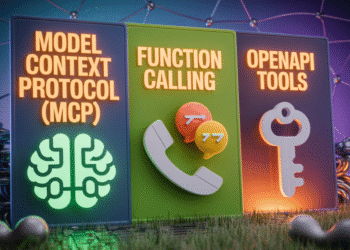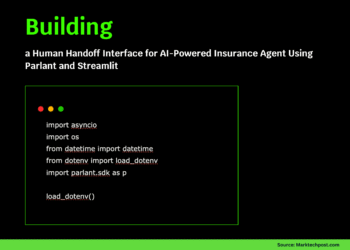Enterprise AI in the U.S. has left the experimentation phase. CFOs expect clear ROI, boards expect evidence of risk oversight, and regulators expect controls consistent with existing risk management obligations. Against this backdrop, every VP of AI faces the enduring question: Should we build this capability in-house, buy it from a vendor, or blend the two?
The truth is there is no universal winner. The right answer is context-specific and portfolio-based. The choice is not about “in-house vs outsourced” in the abstract, but about mapping each use case to strategic differentiation, regulatory scrutiny, and execution maturity.
The U.S. Context: Regulatory and Market Anchors
While the EU is defining prescriptive rules through the AI Act, the U.S. remains sector-driven and enforcement-led. For U.S. enterprises, the real references are:
- NIST AI Risk Management Framework (RMF): The de facto federal guidance, shaping procurement and vendor assurance programs across agencies and now mirrored in enterprise practice.
- NIST AI 600-1 (Generative AI Profile): Refines evaluation expectations on hallucination testing, monitoring, and evidence.
- Banking/finance: Federal Reserve SR 11-7 (model risk), FDIC/FFIEC guidance, OCC’s continued scrutiny of models embedded in underwriting/risk.
- Healthcare: HIPAA + FDA regulatory oversight of algorithms in clinical context.
- FTC enforcement authority: Expect risk of “deceptive practices” citations around transparency/disclosure.
- SEC disclosure expectations: Public companies must begin disclosing “material AI-related risks”, especially bias, cybersecurity, and data use.
Bottom line for U.S. leaders: there is no monolithic AI Act yet, but boards and regulators will test your oversight, model governance, and vendor risk management frameworks. That reality puts pressure on the Build vs Buy decision to be evidence-based and defensible.
Build, Buy, and Blend: The Executive Portfolio View
At a strategic level, consider:
- Build when a capability underpins competitive advantage, involves sensitive U.S. regulatory data (PHI, PII, financials), or demands deep integration into proprietary systems.
- Buy when the use case is commoditized, speed-to-value determines success, or vendors bring compliance coverage you lack internally.
- Blend for the majority of U.S. enterprise use cases: pair proven vendor platforms (multi-model routing, safety layers, compliance artifacts) with custom “last mile” work on prompts, retrieval, orchestration, and domain evals.
A 10-Dimension Framework for Scoring Build vs Buy
To move beyond opinion-driven debates, use a structured scoring model. Each dimension is scored 1–5, weighted by strategic priorities.
| Dimension | Weight | Build Bias | Buy Bias |
|---|---|---|---|
| 1. Strategic differentiation | 15% | AI capability is your product moat | Commodity productivity gain |
| 2. Data sensitivity & residency | 10% | PHI/PII/regulatory datasets | Vendor can evidence HIPAA/SOC 2 |
| 3. Regulatory exposure | 10% | SR 11-7/HIPAA/FDA obligations | Vendor provides mapped controls |
| 4. Time-to-value | 10% | 3–6 months acceptable | Must deliver in weeks |
| 5. Customization depth | 10% | Domain-heavy, workflow-specific | Configurable suffices |
| 6. Integration complexity | 10% | Embedded into legacy, ERP, control plane | Standard connectors adequate |
| 7. Talent & ops maturity | 10% | LLMOps in place with platform/SRE | Vendor hosting preferred |
| 8. 3-year TCO | 10% | Infra amortized, reuse across teams | Vendor’s unit economics win |
| 9. Performance & scale | 7.5% | Millisecond latency or burst control required | Out-of-box SLA acceptable |
| 10. Lock-in & portability | 7.5% | Need open weights/standards | Comfortable with exit clause |
Decision rules:
- Build if Build score exceeds Buy score by ≥20%.
- Buy if Buy exceeds Build by ≥20%.
- Blend if results are within the ±20% band.
For executives, this turns debates into numbers—and sets the stage for transparent board reporting.
Modeling TCO on a 3-Year Horizon
A common failure mode in U.S. enterprises is comparing 1-year subscription costs against 3-year build costs. Correct decision-making requires like-for-like.
Build TCO (36 months):
- Internal engineering (AI platform eng, ML eng, SRE, security)
- Cloud compute (training + inference with GPUs/CPUs, caching layers, autoscaling)
- Data pipelines (ETL, labeling, continuous eval, red-teaming)
- Observability (vector stores, eval datasets, monitoring pipelines)
- Compliance (NIST RMF audit prep, SOC 2 readiness, HIPAA reviews, penetration testing)
- Egress fees and replication costs across regions
Buy TCO (36 months):
- Subscription/license baseline + seats
- Usage fees (tokens, calls, context length)
- Integration/change management uplift
- Add-ons (proprietary RAG, eval, safety layers)
- Vendor compliance uplift (SOC 2, HIPAA BAAs, NIST mapping deliverables)
- Migration costs at exit—especially egress fees, which remain material in U.S. cloud economics
When to Build (U.S. Context)
Best-fit scenarios for Build:
- Strategic IP: Underwriting logic, risk scoring, financial anomaly detection—the AI model is central to revenue.
- Data control: You cannot let PHI, PII, or trade secrets pass into opaque vendor pipelines. HIPAA BAAs may cover exposure, but often fall short.
- Custom integration: AI must be wired into claims systems, trading platforms, or ERP workflows that outsiders cannot navigate efficiently.
Risks:
- Continuous compliance overhead: auditors will demand evidence artifacts, not policies.
- Talent scarcity: hiring senior LLMOps engineers in the U.S. remains highly competitive.
- Predictable overspending: red-teaming, observability, and evaluation pipelines are hidden costs not fully captured in initial budgets.
When to Buy (U.S. Context)
Best-fit scenarios for Buy:
- Commodity tasks: Note-taking, Q&A, ticket deflection, baseline code copilots.
- Speed: Senior leadership demands deployment inside a fiscal quarter.
- Vendor-provided compliance: Reputable U.S. vendors increasingly align to NIST RMF, SOC 2, and HIPAA, with some pursuing or achieving ISO/IEC 42001 certification.
Risks:
- Vendor lock-in: Some providers expose embeddings or retrieval only through proprietary APIs.
- Usage volatility: Token metering creates budget unpredictability unless governed by rate limits.
- Exit costs: Cloud egress pricing and re-platforming can distort ROI. Always demand explicit exit clauses around data portability.
The Blended Operating Model (Default for U.S. Enterprises in 2025)
Across U.S. Fortune 500 firms, the pragmatic equilibrium is blend:
- Buy platform capabilities (governance, audit trails, multi-model routing, RBAC, DLP, compliance attestations).
- Build the last mile: retrieval, tool adapters, evaluation datasets, hallucination tests, and sector-specific guardrails.
This allows scale without surrendering control of sensitive IP or falling short on board-level oversight.
Due Diligence Checklist for VP of AI
If Buying Vendors:
- Assurance: ISO/IEC 42001 + SOC 2 + mapping to NIST RMF.
- Data Management: HIPAA BAA, retention and minimization terms, redaction, regional segregation.
- Exit: Explicit portability contract language; negotiated egress fee relief.
- SLAs: Latency/throughput targets, U.S. data residency guarantees, bias and safety evaluation deliverables.
If Building In-House:
- Governance: Operate under NIST AI RMF categories—govern, map, measure, manage.
- Architecture: Multi-model orchestration layer to avoid lock-in; robust observability pipelines (traces, cost metering, hallucination metrics).
- People: Dedicated LLMOps team; embedded evaluation and security experts.
- Cost Controls: Request batching, retrieval optimization, explicit egress minimization strategies.
Decision Tree for Executives
- Does the capability drive a competitive advantage within 12–24 months?
- Yes → Probable Build.
- No → Consider Buy.
- Do you have governance maturity (aligned to NIST AI RMF) in-house?
- Yes → Lean Build.
- No → Blend: Buy vendor guardrails, build last-mile.
- Would a vendor’s compliance artifacts satisfy regulators faster?
- Yes → Lean Buy/Blend.
- No → Build to meet obligations.
- Does 3-year TCO favor internal amortization vs subscription costs?
- Internal lower → Build.
- Vendor lower → Buy.
Example: U.S. Healthcare Insurer
Use Case: Automated claim review and explanation of benefits.
- Strategic differentiation: Moderate—efficiency vs competitor baseline.
- Data sensitivity: PHI, subject to HIPAA.
- Regulation: Subject to HHS + potential FDA oversight for clinical decision support.
- Integration: Tight coupling with legacy claim processing systems.
- Time-to-value: 6-month tolerance.
- Internal team: Mature ML pipeline, but limited LLMOps experience.
Outcome:
- Blend. Use a U.S. vendor platform with HIPAA BAA and SOC 2 Type II assurance for base LLM + governance.
- Build custom retrieval layers, medical CPT/ICD code adaptation, and evaluation datasets.
- Map oversight to NIST AI RMF and document evidence for board audit committee.
Takeaways for VPs of AI
- Use a scored, weighted framework to evaluate each AI use case—this creates audit-ready evidence for boards and regulators.
- Expect blended estates to dominate. Retain last-mile control (retrieval, prompts, evaluators) as enterprise IP.
- Align builds and buys to NIST AI RMF, SOC 2, ISO/IEC 42001, and U.S. sector-specific laws (HIPAA, SR 11-7).
- Always model 3-year TCO including cloud egress.
- Insert exit/portability clauses into contracts up front.
For U.S. enterprises in 2025, the Build vs Buy question is not about ideology. It is about strategic allocation, governance evidence, and execution discipline. VPs of AI who operationalize this decision-making framework will not just accelerate deployment—they will also build resilience against regulatory scrutiny and board risk oversight.
Feel free to check out our GitHub Page for Tutorials, Codes and Notebooks. Also, feel free to follow us on Twitter and don’t forget to join our 100k+ ML SubReddit and Subscribe to our Newsletter.
Asif Razzaq is the CEO of Marktechpost Media Inc.. As a visionary entrepreneur and engineer, Asif is committed to harnessing the potential of Artificial Intelligence for social good. His most recent endeavor is the launch of an Artificial Intelligence Media Platform, Marktechpost, which stands out for its in-depth coverage of machine learning and deep learning news that is both technically sound and easily understandable by a wide audience. The platform boasts of over 2 million monthly views, illustrating its popularity among audiences.


















